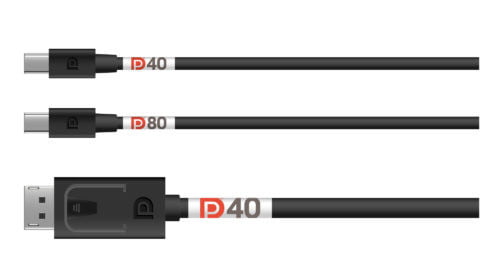Digital Trends may earn a commission when you buy through links on our site.
The Video Electronics Standards Association (VESA) has recently announced plans to standardize its DisplayPort UHBR (Ultra-high Bit Rate) support with a certification program, which will enable video source, display, and cable products to use properly labeled cables in their intended fashion.
This update from VESA comes after confusion arose from the release of the new HDMI 2.1 specification, which is not entirely compatible with some HDMI 2.0 cables that have since been retired, and certain new features, such as 4K 120Hz video, might not function.

With the Ultra-High Bit Rate (UHBR) certification, the cables will be labeled according to their transfer rates of “DP40” for 10 gigabits per second per lane or “DP80” for 20 gigabits per second per lane. The 40 and 80 represent the maximum bandwidth of the cables using all four lanes of the DisplayPort.
Vendors including Accell, BizLink, and Wizen are already offering the new DP40 and DP80 DisplayPort cables that adhere to the new UHBR standard, with cables by other brands currently being tested for certification and expected to be released to the market soon.
The certification protocol will also take into consideration the UHBR latest highlight features, which VESA claims at higher bandwidth can support 8K 60Hz HDR, 4K 240Hz HDR, two 4K 120Hz HDR, or four 4K 60Hz HDR displays through a single cable.
As the Ultra-High Bit Rate certification will also apply to the current DisplayPort 2.0 standard, PCWorld noted at maximum capacity a single DisplayPort 2.0 DP80 cable can power a single display at 16K resolution and 60Hz, two displays at 8K and 120Hz, or three 4K displays at 90Hz.
DP40 and DP80 cables come in full-size and Mini DisplayPort options and are backward compatible with devices featuring DisplayPort link and the proper support standards. They also support DisplayPort Alt Mode, using the DisplayPort over the USB Type-C connector.
Editors’ Recommendations
Credit: Source link


Comments are closed.